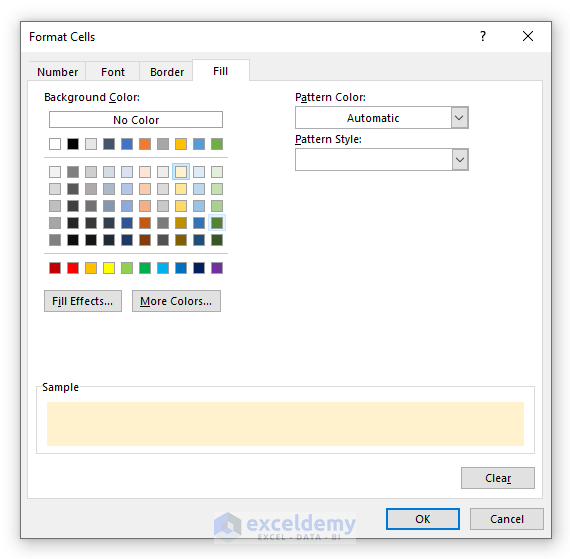Highlight Excel Duplicates from Another Sheet Easily

The Excel application is a powerful tool used by businesses, academics, and professionals for data analysis and management. Among its myriad of functions, identifying and highlighting duplicates from another sheet can be particularly useful in various scenarios, including merging databases, cleaning up data, or simply ensuring the integrity of your dataset. Here's a comprehensive guide on how you can easily highlight Excel duplicates from another sheet.
Preparation: Setting Up Your Data

Before diving into the process, ensuring your data is well-prepared is crucial. Here are some steps to get started:
- Organize your data into sheets, preferably with headers to make references easier.
- Ensure the data format is consistent across sheets; for instance, dates in one format, or numbers with or without decimal points.
- Remove any extra spaces or special characters that might cause confusion during comparison.
Step-by-Step Guide to Highlight Excel Duplicates

1. Understanding the VLOOKUP Function

The VLOOKUP function in Excel is typically used to look up a value in the first column of a table and return a corresponding value from another column in the same row. Here’s how it works:
- Lookup Value - The value you want to find in another table.
- Table Array - The range of cells that contains the lookup table.
- Col Index Num - The column number in the table from which the value should be returned.
- Range Lookup - Whether you want an exact match or an approximate match.
2. Using Conditional Formatting with VLOOKUP

To highlight duplicates:
- Select the range in your primary sheet where you want to find duplicates.
- Go to the ‘Home’ tab, click on ‘Conditional Formatting’, then ‘New Rule’.
- Choose ‘Use a formula to determine which cells to format’.
- Enter the formula:
=VLOOKUP(A1,Sheet2!A:B,2,FALSE)=A1, assuming column A is where you have your key identifiers, and Sheet2 is the sheet you’re comparing against. This formula checks if the value in A1 exists in Sheet2’s column A, and if the corresponding value in column B matches the cell in the primary sheet. - Set the format style to highlight the cells as desired.
📝 Note: Ensure that the column ranges in VLOOKUP correspond to the layout of your data in the second sheet.
3. Leveraging Array Formulas

Another method uses array formulas, which can be more efficient:
- In the cell where you want to highlight duplicates, enter the array formula:
=NOT(ISNA(VLOOKUP(A1:A1000,Sheet2!A1:B1000,2,FALSE))). - Press Ctrl+Shift+Enter to confirm the array formula.
- Conditional formatting will then be applied as explained in the previous section.
4. Advanced Filtering

For more complex scenarios:
- Go to the ‘Data’ tab, click ‘Advanced’, and in the ‘List Range’ field, select your primary dataset.
- In the ‘Criteria Range’, set up a new range that includes the comparison criteria, such as values from Sheet2.
- Enable ‘Unique records only’ to filter out duplicates.
Additional Tips

Here are some tips to enhance your duplicate highlighting experience:
- Use Helper Columns: Sometimes, adding a helper column with a unique identifier can simplify complex comparisons.
- Case Sensitivity: Excel’s VLOOKUP and other functions are not case-sensitive by default. Use EXACT if case matters.
- Partial Matches: To find partial matches, consider using the MATCH function with wildcards.
After following these steps and tips, you should now be able to highlight duplicates from another sheet in Excel with relative ease. This functionality not only helps in data integrity but also in efficient data analysis.
Summing up, the ability to highlight duplicates in Excel is an essential skill that saves time and reduces errors in data management. By using conditional formatting with VLOOKUP or leveraging array formulas, you can quickly identify and manage duplicates. Remember, the better you prepare your data, the smoother the process will be. Keep in mind the nuances like case sensitivity or partial matches for a more refined analysis. With these tools and techniques, you're well on your way to mastering one of Excel's many capabilities.
How can I highlight duplicates between two sheets using Excel?

+
You can use conditional formatting with the VLOOKUP function to highlight duplicates between two sheets. Enter the formula in the conditional formatting rule to check if a value exists in the second sheet.
What if the VLOOKUP function doesn’t work for my needs?

+
Try using array formulas which can compare multiple ranges simultaneously. Alternatively, Excel’s Power Query or Power BI can offer more robust solutions for complex data manipulation.
Can I highlight partial duplicates or similar matches?

+
Yes, you can use the MATCH function with wildcards or consider using fuzzy matching techniques with Power Query if you have Excel 365 or later versions.
Is there a way to handle case-sensitive data when highlighting duplicates?

+
VLOOKUP and similar functions in Excel are not case-sensitive. Use the EXACT function for case-sensitive comparisons or leverage custom functions if necessary.
What can I do if my data sheets are large?

+
For large datasets, consider using Power Query to transform data or Excel’s filters with a helper column to isolate unique records. This approach is more efficient for massive data sheets.



